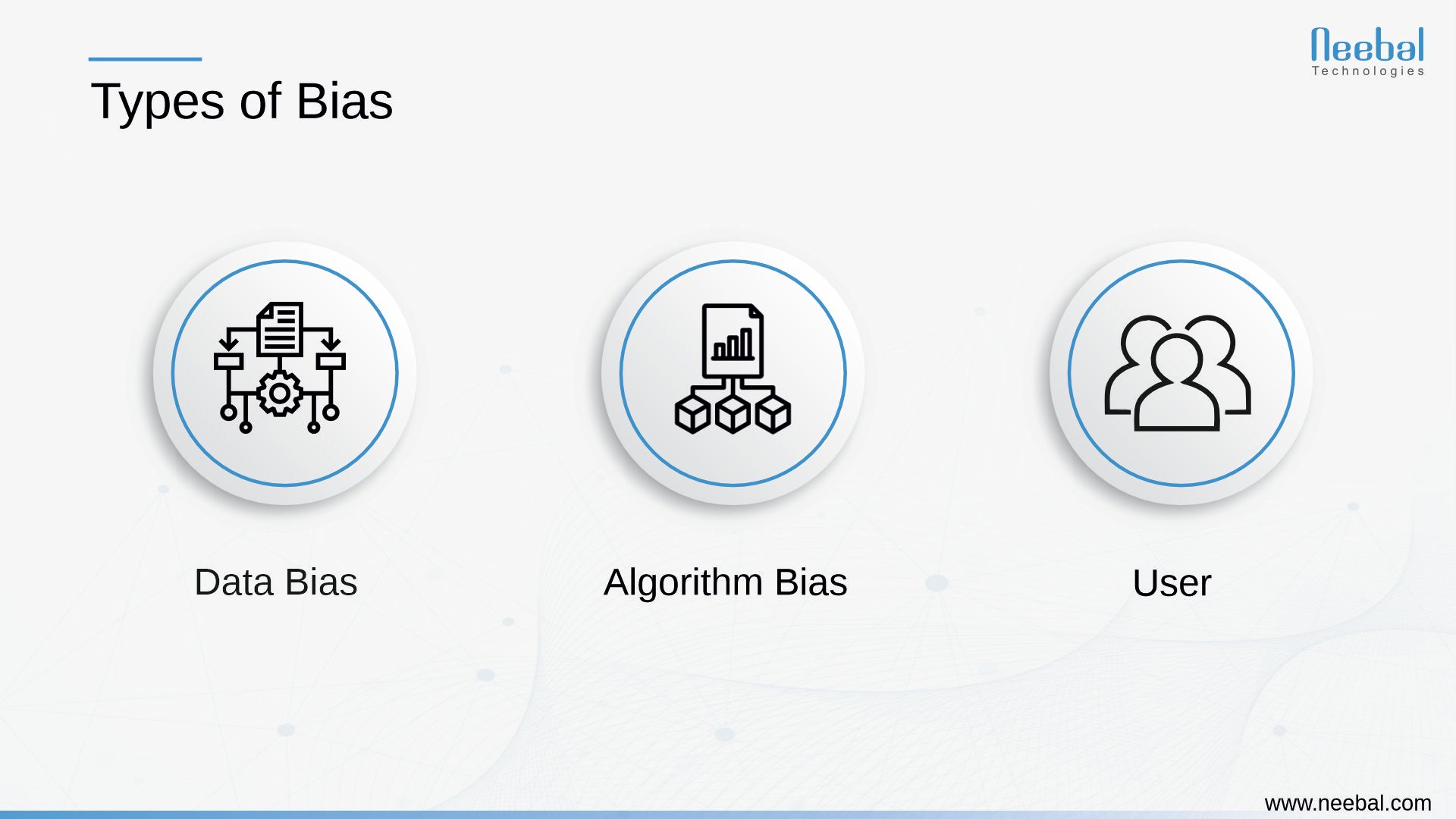Artificial Intelligence (AI) has made remarkable advancements, transforming various industries and improving our daily lives. However, alongside these accomplishments comes a growing concern - the ethical implications and potential biases in AI systems. Machine learning algorithms, which are the core of AI, are not immune to bias, and if left unchecked, they can perpetuate unfairness and discrimination. This blog post explores AI ethics and bias, as well as methods for ensuring fairness in machine learning algorithms.
Understanding Bias in Machine Learning
Bias in machine learning refers to the unfair or discriminatory treatment of certain groups or individuals in the decision-making process. It can manifest in various ways, such as gender, race, age, or socio-economic status. Bias is typically introduced during the data collection, preprocessing, or algorithm training. There are three main types of bias:
Types of Bias

- Data Bias: This occurs when the training data used to develop a machine learning model is not representative of the real-world population. For example, if a facial recognition system is primarily trained on data from one ethnic group, it may perform poorly on other groups.
- Algorithm Bias: This type of bias arises from the design and implementation of the machine learning algorithm itself. If the algorithm's parameters, features, or optimization processes are not chosen carefully, it may favor certain groups unfairly.
- User Bias: User bias occurs when users of AI systems interact with the technology in a way that reinforces pre-existing biases. For instance, if a recommendation system shows users content they already agree with, it can contribute to echo chambers and confirmation bias.
The Consequences of Bias
Biased AI systems have far-reaching consequences. They can lead to unfair treatment, exacerbate societal inequalities, and erode trust in AI technology. Some of the potential negative impacts include:
- Discrimination: Biased AI can lead to discriminatory outcomes, such as denying job opportunities, loans, or access to services based on factors like race or gender.
- Reinforcement of Stereotypes: Biased algorithms may perpetuate harmful stereotypes by making biased predictions or recommendations.
- Loss of Trust: When users experience bias in AI systems, they lose trust in the technology, which can hinder its widespread adoption.
- Legal and Ethical Implications: Organizations deploying biased AI systems may face legal and ethical consequences, including lawsuits and regulatory fines.
Ensuring Fairness in Machine Learning Algorithms
Ensuring fairness in machine learning algorithms is a critical component of responsible AI development. Fairness means that the algorithm's predictions and decisions are not biased or discriminatory toward any particular group and should promote equitable treatment for all individuals or groups. Here are key strategies and considerations to ensure fairness in machine learning algorithms:
Define Fairness
Start by clearly defining what fairness means in the context of your application. Fairness can take different forms, such as demographic parity (equal outcomes for different groups), equal opportunity (equal false positive or false negative rates), and individual fairness (similar individuals receive similar predictions).
Collect Diverse and Representative Data
Ensure that your training data is diverse and representative of the population your model will serve. Biased or incomplete data can lead to biased algorithms. Data should include a broad range of demographic and social groups.
Data Preprocessing
Apply preprocessing techniques to address bias in the data. This may involve techniques like re-sampling underrepresented groups, removing sensitive attributes, or using data augmentation to create balanced datasets.
Sensitive Attribute Mitigation
Sensitive attributes such as gender, race, or age should not be used as features directly in your model, as this can lead to discriminatory outcomes. Use techniques like adversarial debiasing or re-weighting to reduce the impact of these attributes.
Algorithmic Fairness
Choose machine learning algorithms that are designed to mitigate bias. Some algorithms incorporate fairness constraints or regularization terms to ensure equitable predictions. For instance, the Equal Opportunity or Equal Odds Post-processing methods can correct bias in binary classification models.
Fairness Metrics
Implement fairness metrics to measure and assess the model's fairness quantitatively. Standard fairness metrics include disparate impact, equal opportunity, and theil index. These metrics help in evaluating the model's performance concerning fairness.
Transparency and Explainability
Ensure that your machine learning models are transparent and provide explanations for their predictions. Users and stakeholders should be able to understand how the model makes decisions, which helps identify and address sources of bias.
Regular Auditing
Continuously audit the model's performance for bias and fairness, even after deployment. Periodic evaluations and model updates can significantly help maintain fairness over time as data distributions change.
User Feedback and Redress
Encourage users to provide feedback if they encounter biased outcomes. Establish mechanisms for addressing these issues and improving the model based on user feedback.
Diverse Development Teams
Build diverse teams of developers, data scientists, and ethicists to ensure that potential sources of bias are identified and addressed at various stages of AI development. Diverse perspectives can lead to more comprehensive fairness considerations.
Regulatory Compliance
Ensure that your AI system complies with relevant laws and regulations, such as anti-discrimination laws, data protection laws, and industry-specific standards. Legal compliance is essential in avoiding legal repercussions related to bias.
Ethical Considerations
Incorporate ethical considerations into the development process. This includes considering the broader societal implications of your AI system and its impact on individuals and communities.
Education and Awareness
Educate your team and stakeholders about the ethical and fairness challenges in AI. Promote awareness and understanding of these issues to foster a culture of responsibility.
Conclusion
AI ethics and bias are critical considerations in developing and deploying machine learning algorithms. The consequences of biased AI are far-reaching, and taking proactive steps to ensure fairness is essential. As AI technology continues to advance, a commitment to transparency, fairness, and ongoing vigilance is necessary to build AI systems that are equitable, trustworthy, and beneficial to all of society. Addressing bias is not a one-time task but an ongoing process that demands continuous effort and ethical awareness.
